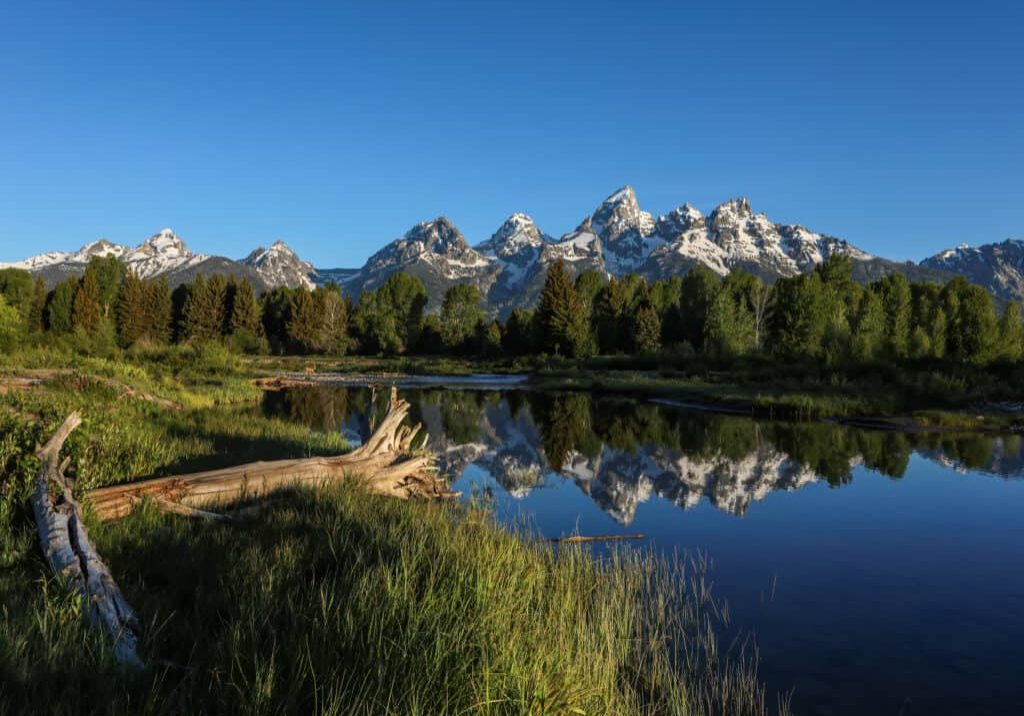Preserving Wild Spaces

When it comes to visiting my favorite National Parks out West, I would say I’m . . . intense. Up at 4:50 a.m. I have a routine down by the third day. Camera batteries charged? Check. Reading glasses? Check. Jacket? Check. Memory cards? Check. Larabar for later? Check. With the checklist complete, my camera bag over my shoulder, and hiking boots on my feet, my husband and I are out the door, hoping to beat the bright sunlight and catch a glimpse of some wild things grazing in the liminal glow.
For the next four hours our eyes are employed as scouts, scanning every stump, fence post, and stream – waiting for a moose, Sandhill Crane, or grizzly to stand out from the terrain. Some mornings are quiet and we don’t see much, but the times we do reward us and keep us going. And my heart is full.
So when the pandemic shut down our annual family trip to Rocky Mountain National Park in 2020, we were disappointed – like so many other people whose plans were cancelled. After research we discovered that Grand Teton National Park was an option, and we could drive there safely, precautions in place. Our trip was successful, so much so, we repeated it again in 2021. We rented a condo in Wilson, Wyoming, and spent six full days photographing wildlife, eating ice cream at Moo’s (twice!), riding the Mountain Coaster, moseying around mountain lakes, and hiking miles of pristine trails.
Thankfully, my family did not encounter large crowds either year since we visited as early in the spring as possible to avoid them, but the crowds did come. As many Americans struggled to beat the cooped-up feelings of quarantine and ventured out to wide open spaces, local and far, parks couldn’t handle the surge. Illegal camping, waste, graffiti, damages to protected areas, crowds, and understaffing were reported from areas like Arches National Park, the Grand Tetons, Rocky Mountain National Park, and Glacier. Even locally, the Fall Creek Gorge, or “Pot Holes” as it’s affectionately called, was closed indefinitely due to heavy use, trash, and disregard of the rules.
So as a person whose passion it is to photograph these wild places and animals, what is my part? What is our part? And why is preserving nature areas crucial? Let’s start with a general look at why it’s important. These places are important because they house protected plant and animal ecosystems. They preserve the beauty and history of untouched natural spaces. They provide an avenue for science and research. Our protected areas teach us to look inward and bring solace and inspiration to our daily lives. They show us there is something bigger than ourselves.
The way we treat these areas says something about us as a whole, as a nation, and a community. The next time you visit a national or state park, a conservation area, a trail system, or your local creek, consider learning about the place before you go. Look at the maps, google its history, and read the rules and guidelines. Respect the rangers and naturalists. Give animals the designated amount of space. Carry out your trash and leave the area as you found it. Remove nothing. Give other people room to soak in the views. Happily pay the entrance fee.
Of course, this is a much longer discussion than a blog post.
But what’s my part? As I’m heading out the door to hike or photograph, whether it’s the Celery Bog close to home or the Grand Tetons out West, I must continually examine myself.
My checklist should always include – respect the rules, protect the wildlife, leave the space untouched, and soak it all in without leaving my imprint. I’m just a small part of a greater whole, and these natural places are worth protecting, not just for me, but for the larger community and generations to come.